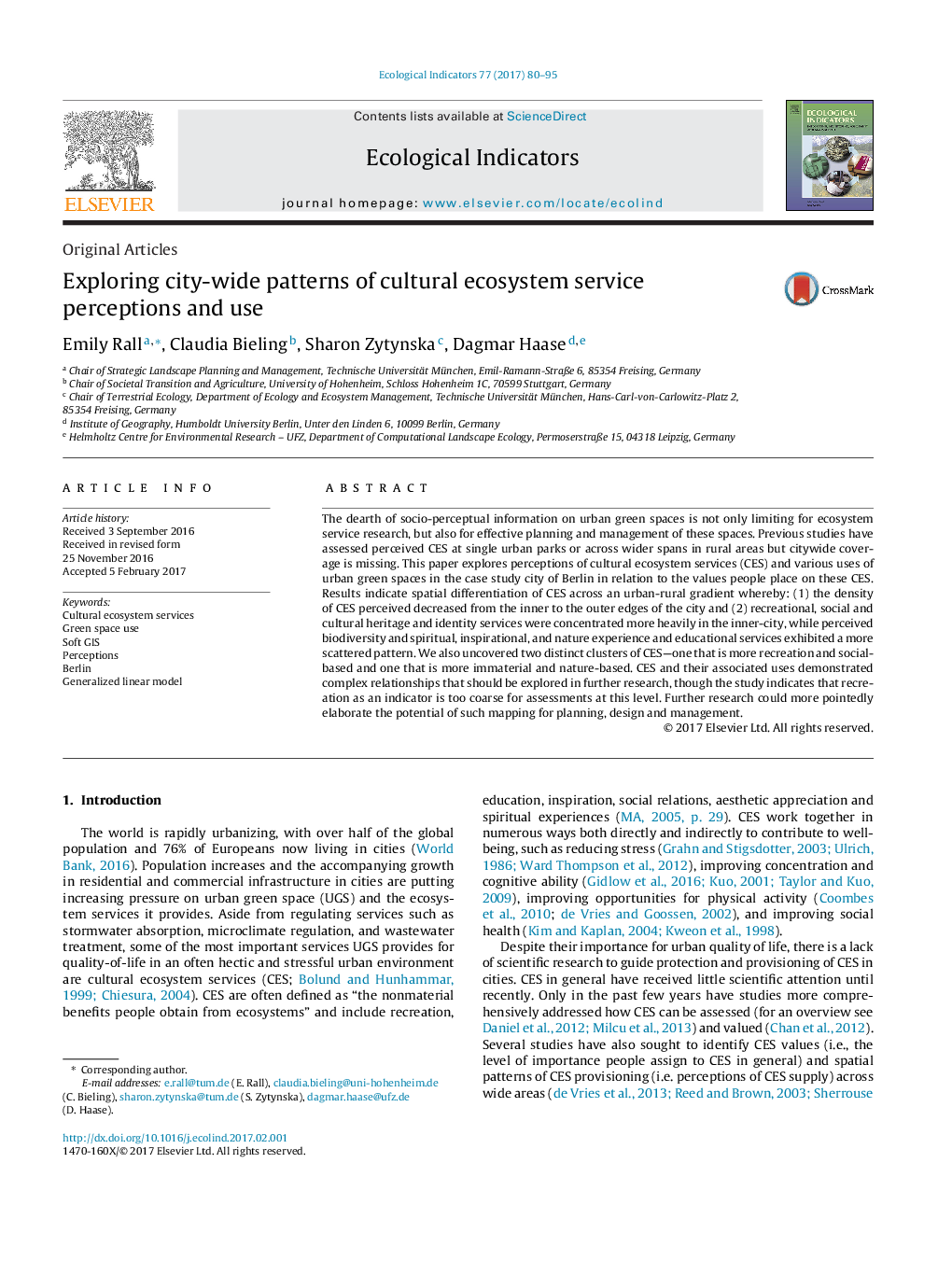| Article ID | Journal | Published Year | Pages | File Type |
|---|---|---|---|---|
| 5741712 | Ecological Indicators | 2017 | 16 Pages |
Abstract
The dearth of socio-perceptual information on urban green spaces is not only limiting for ecosystem service research, but also for effective planning and management of these spaces. Previous studies have assessed perceived CES at single urban parks or across wider spans in rural areas but citywide coverage is missing. This paper explores perceptions of cultural ecosystem services (CES) and various uses of urban green spaces in the case study city of Berlin in relation to the values people place on these CES. Results indicate spatial differentiation of CES across an urban-rural gradient whereby: (1) the density of CES perceived decreased from the inner to the outer edges of the city and (2) recreational, social and cultural heritage and identity services were concentrated more heavily in the inner-city, while perceived biodiversity and spiritual, inspirational, and nature experience and educational services exhibited a more scattered pattern. We also uncovered two distinct clusters of CES-one that is more recreation and social-based and one that is more immaterial and nature-based. CES and their associated uses demonstrated complex relationships that should be explored in further research, though the study indicates that recreation as an indicator is too coarse for assessments at this level. Further research could more pointedly elaborate the potential of such mapping for planning, design and management.
Related Topics
Life Sciences
Agricultural and Biological Sciences
Ecology, Evolution, Behavior and Systematics
Authors
Emily Rall, Claudia Bieling, Sharon Zytynska, Dagmar Haase,
